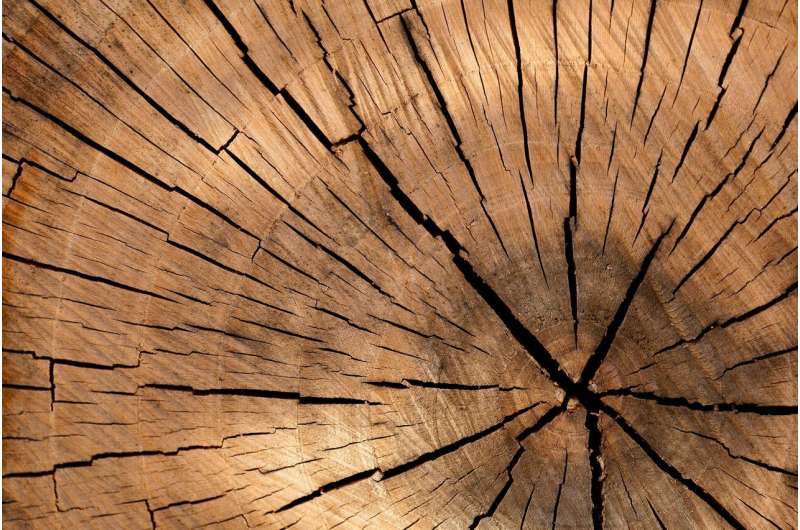This article has been reviewed according to Science X's editorial process and policies. Editors have highlighted the following attributes while ensuring the content's credibility:
fact-checked
peer-reviewed publication
trusted source
proofread
Tree ring data brings insight to drought variability in central Yunnan

Southwest China, including Yunnan Province, is prone to severe droughts due to the failure of summer monsoon precipitation. Despite the great potential for dendroclimatological studies in Yunnan, there have been very few attempts at tree-ring derived climate reconstructions in the central and southern parts of Yunnan, especially in the subtropics.
In a study published in Palaeogeography, Palaeoclimatology, Palaeoecology, researchers from the Xishuangbanna Tropical Botanical Garden (XTBG) of the Chinese Academy of Sciences and their collaborators attempted to gain insights into hydroclimate variability in central Yunnan Province. They constructed a tree-ring width chronology of Tsuga dumosa, one of the oldest tree species in the Wuliang Mountain area that has previously shown to be suitable for reconstructing hydroclimate variability.
Correlation analyses indicated that moisture availability during the spring/early summer season was the key factor limiting tree growth of T. dumosa in the Wuliang Mountain. The radial growth of T. dumosa showed a negative relationship with temperature, especially in April before the rainy season. Low precipitation and humidity in March–April reduced the radial growth of T. dumosa.
The researchers reconstructed the March–June standardized precipitation-evapotranspiration index (SPEI) for the period from 1826 to 2020 CE, by using a well-calibrated regression model. The reconstructed March–June SPEI series revealed drought fluctuations at both interannual and interdecadal scales, along with an increased occurrence of extreme dry/wet events in recent decades.
In addition, the reconstruction identified 11 years of extreme drought, with the longest recorded dry and wet periods being 1953–1963 and 1988–2004, respectively. The drought reconstruction series showed a high frequency cycle of two to eight years. The reconstruction also showed a higher frequency of extreme dry/wet events after the 1960s , which was not found in other parts of Yunnan.
"Our study highlights the dendroclimatic potential of conifer tree species growing in subtropical regions and their ability to capture regional hydroclimatic signals," said Fan Zexin of XTBG.
More information: Yun-Li Yin et al, Tree rings in Tsuga dumosa reveal increasing drought variability in subtropical southwest China over the past two centuries, Palaeogeography, Palaeoclimatology, Palaeoecology (2023). DOI: 10.1016/j.palaeo.2023.111757
Journal information: Palaeogeography, Palaeoclimatology, Palaeoecology
Provided by Chinese Academy of Sciences




















